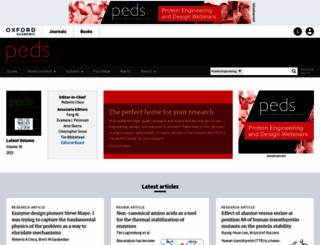Page Load Speed
3.4 sec in total
First Response
18 ms
Resources Loaded
2.5 sec
Page Rendered
857 ms

About Website
Visit peds.oxfordjournals.org now to see the best up-to-date Peds Oxfordjournals content for United States and also check out these interesting facts you probably never knew about peds.oxfordjournals.org
Publishes research papers and review articles relevant to the engineering, design and selection of proteins for use in biotechnology and therapy, and for understanding fundamental properties of activi...
Visit peds.oxfordjournals.orgKey Findings
We analyzed Peds.oxfordjournals.org page load time and found that the first response time was 18 ms and then it took 3.4 sec to load all DOM resources and completely render a web page. This is a poor result, as 60% of websites can load faster.